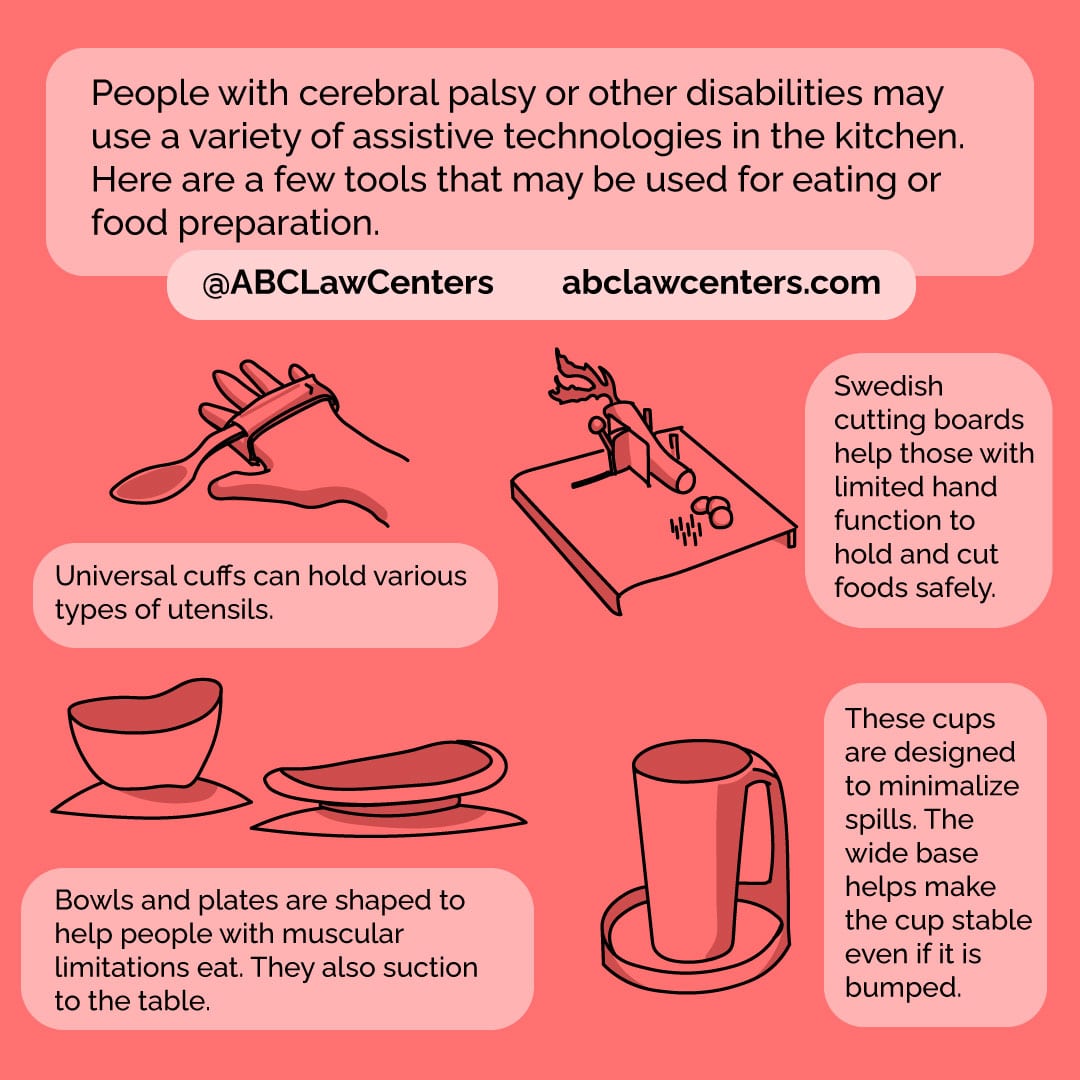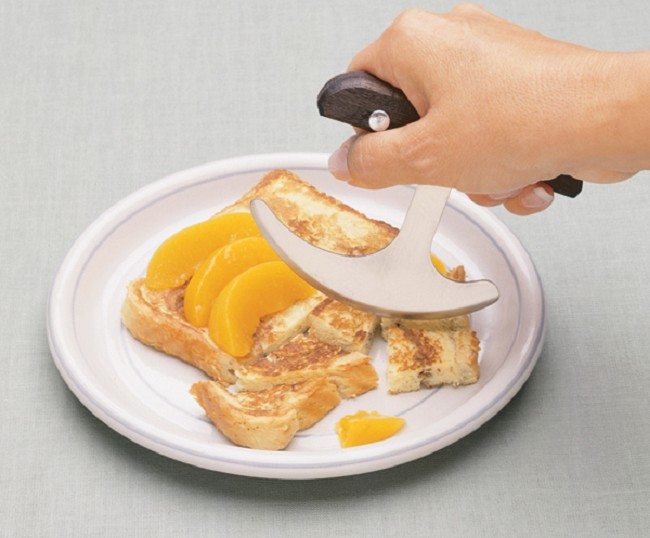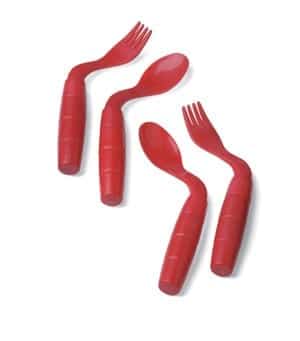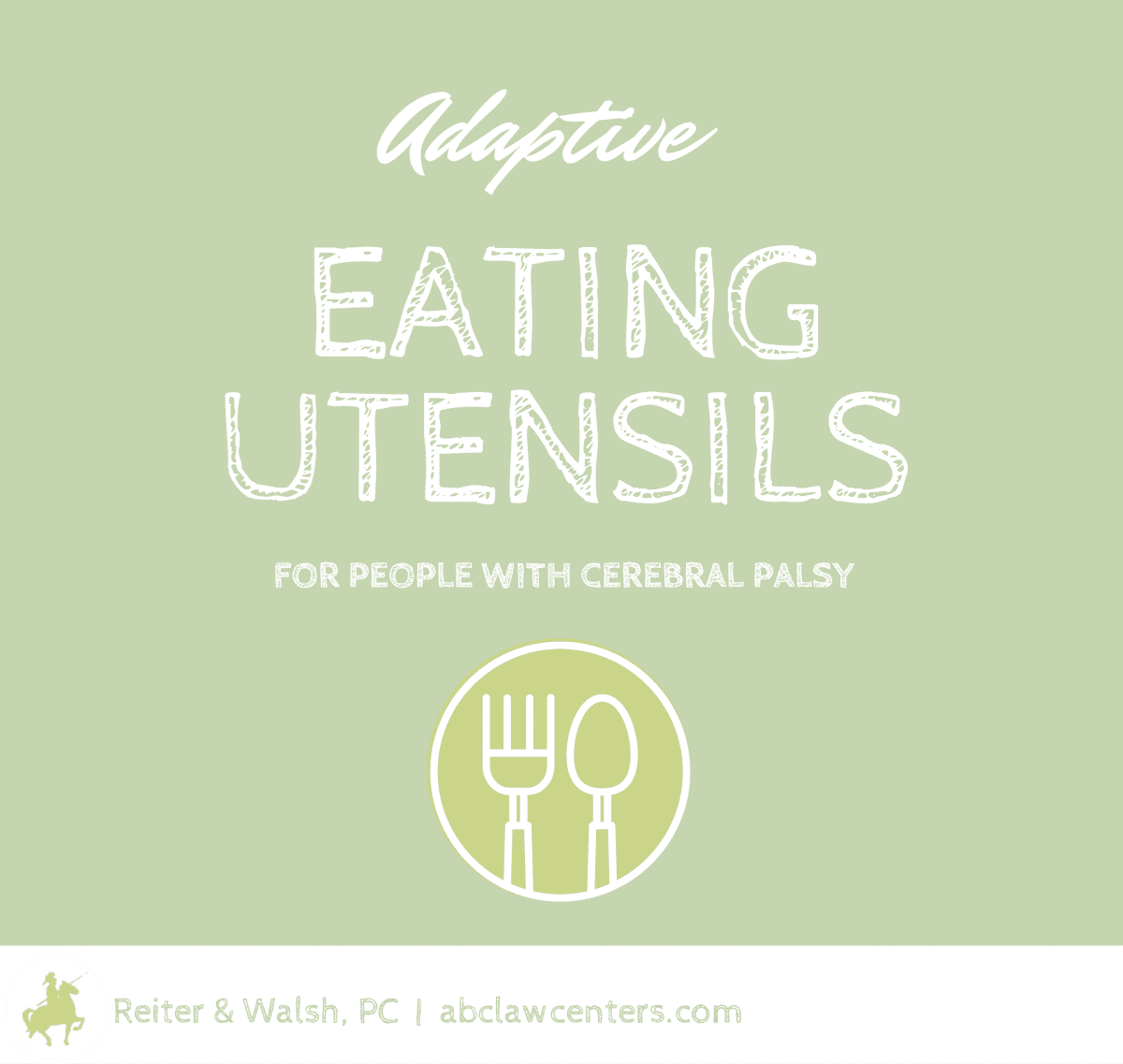People with cerebral palsy and other conditions that affect motor control often struggle to use traditional dining utensils and dishware. Spastic reflexes, muscle weakness, and limited range of motion can make it difficult to eat and drink without spilling. Some people with motor impairments require assistance from others at mealtimes. Adaptive eating utensils and dishware can also make eating and drinking much easier to do independently.
Assistive technology, or adaptive technology, includes a variety of items that improve or maintain function for people with disabilities. The following are some examples that people with cerebral palsy or other disabilities may use in their daily lives for eating or food preparation.

This adjustable cuff loops around the palm of the hand and assists someone with limited grip or hand strength. The pocket can hold eating utensils or other small items.
This cup has a sturdy base to reduce spills. The handle makes the cup easy to pick up regardless of gripping power.
Swedish cutting boards have a device to hold food in place so it can be easily cut. The board also has suction cups on the bottom to ensure the board does not slide.

T-handle Rocker Easy Cut Knife
This knife allows people to cut foods by using a rocking hand motion, which is easier for some people with weak grip. It has a 4.5-inch stainless steel blade and is dishwasher safe.
This tool clips onto the user’s hand (it fits either the right or left hand). It has a pocket that sits under the palm, into which a utensil can be inserted. The clip allows the user to eat without gripping a utensil, and the pocket enables utensils to move into the desired angle.
The Scooper Bowl has a high, curved rim on one side that makes it easier to scoop food into a utensil without spilling. Also, on the bottom of the bowl, there is a suction base to prevent skidding. It is made of heat-resistant plastic and is dishwasher safe.

These adaptive eating utensils were designed by an occupational therapist. They are easy to lift, and they feature a curve that makes it easier to eat with a limited range of motion. The direction of a curve depends on whether the user is right or left-handed; both options can be purchased from this website. The Easie Eaters Angled Utensils are designed for children, but there are also many adult options, like this Classic Bendable Tablespoon.
Weighted dining utensils can help minimize tremors and keep hands steady enough for the user to eat without spilling. This particular set also includes handles with indentations for a comfortable grasp, and a soup spoon with a “deeper bowl to prevent spilling.”
This plate features an ergonomic design with “a sloped base, high sides, and wide rim.” This makes it easier to push food onto a fork or spoon without spilling. The plate is also scratch resistant, very difficult to break, and safe to put in the dishwasher or microwave.
Beyond what we’ve already discussed, there are many other options for adaptive dining utensils and dishware. You may consider perusing the following websites to learn more (please note that we have no affiliation with and are not formally endorsing any of these companies’ products):
Related Reading About Assistive/Adaptive Equipment:
Assistive Equipment That Can Help People with Cerebral Palsy Write
VocaliD: Creating Unique Voices for Nonverbal People
Holiday Gifts for Children with Sensory-Processing Difficulties
